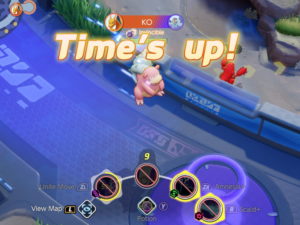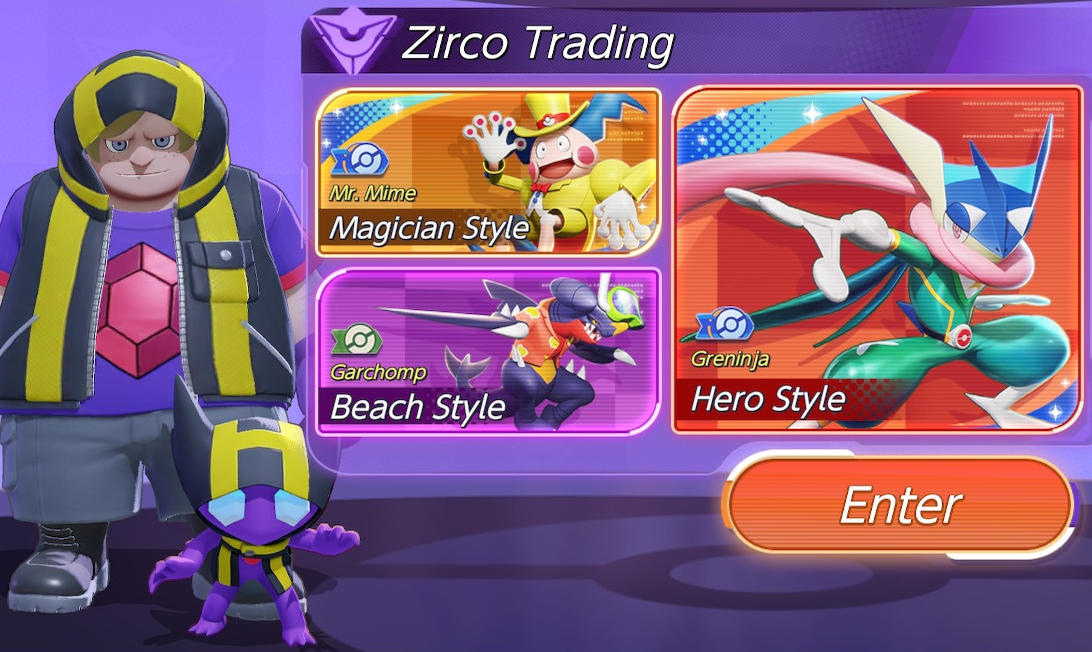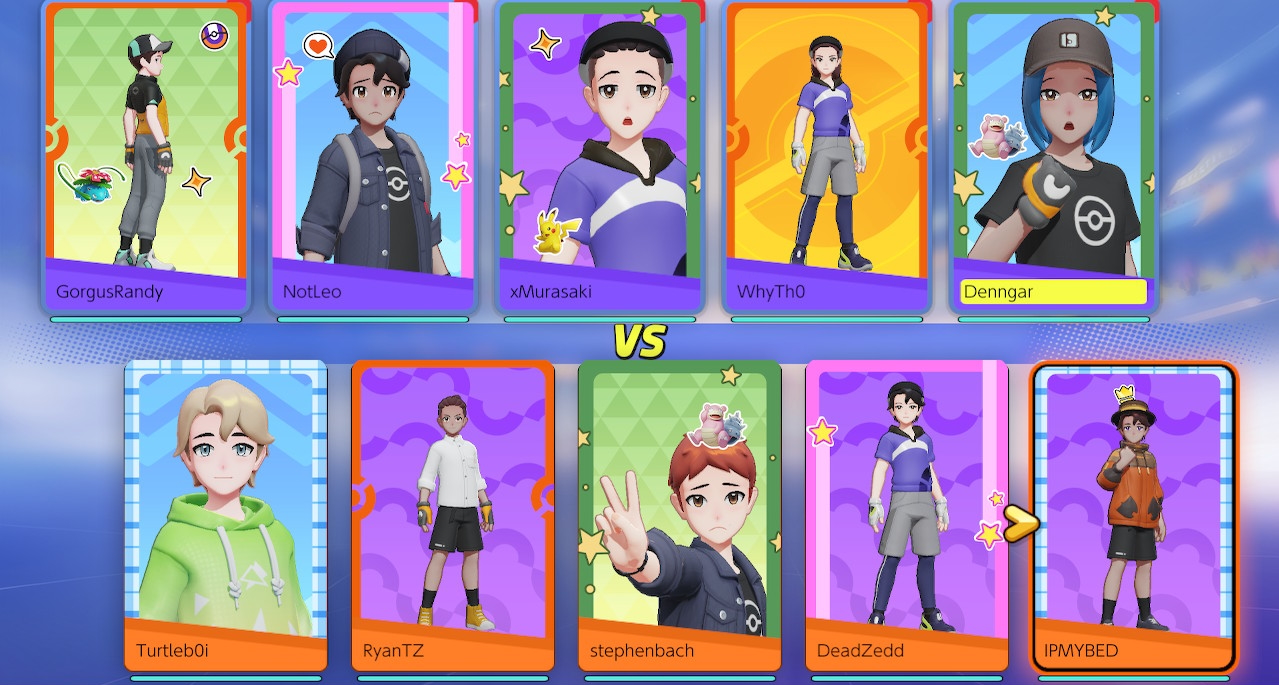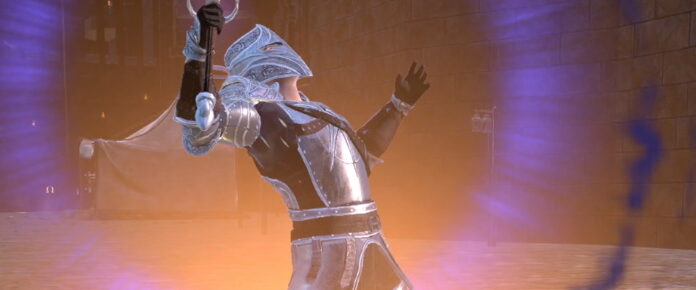
By now, you’ve probably seen several articles about the poor monetization in Pokemon Unite, often based on Reddit posts or streamer hot takes. Most talk about pay-to-win play, though the better ones note that it should eventually even out. Few mention that the gacha loot boxes are problematic as well. While I think most of us can understand paying for new units, skins, and character customization in a free-to-play game, even developers note the monetization scheme is gross. Information on premium game items is confusing and rare, and only after I started my own research did I see someone else record a bit of his own.
I still stand by my initial impressions of the game, as I was fairly specific about potential audiences. If you’re casual, a PvP Pokemon fan, or a non-competitive MOBA fan, the game’s fun. Yes, loot progression sucks, but I think once people have a unit or two that they like, the mastery side of things becomes solid motivation to continue playing.
However, monetization options that probably were included as “options” probably are facing such a backlash because the option of pay-to-win or gambling for exclusives clearly stands out to western players in a negative way, even if natural progression may cancel out some of those effects.
Buying poké-power
As I’d noticed early on that there might be a pay-to-win option, I knew that if I were to test it, I’d need to be further into the game and suffer a losing streak before activating it. I also wanted to check a few areas of monetization, like the gachas, but I’m also not made of money nor did we receive a press account/boost to work with.
What I did do was aim for a major boost to held items, the biggest problem child other outlets and social media have pointed to. As non-paying customers may struggle to get a few trinkets to level 10 early on, I aimed for level 20, except for one item: the Rocky Helmet, which boosts HP and defense and causes some damage reflection. This is because it’s an item that many sites ranked as among the best and helps all kinds of classes, allowing me to test at least one high-level item in multiple contexts. I was able to get it to item level 24 and use it on Snorlax, Garchomp, and Wigglytuff the best, though I did try it with Alola Ninetails and Gengar with poor results.
I had a fairly solid 67% in the Great Class 3 for several days before making my purchases. I had a loss streak of five when I decided to begin the test. After that, I went up about 3% in my wins, hovering around 70% and nearly making it to Expert Class 1 (think 2 ranks up) before falling 3% for a while, and then landing an additional 5% in the hole, leaving me at about 62% – in ranked play only. Quickplay matches, which are my favorite type, have gotten me back to about a 65% win rate, but that number falls when I do a few ranked matches.
Boosting three held items from level 10 to 20 made a difference in my matches. Especially in ranked play, I could feel when another player/team probably didn’t anticipate the damage reflection, especially when paired with the Shell Bell for damage-to-heal effects or taking natural advantage of pokemon that are bulky and/or capable of their own heals. However, I also could feel when I was simply outplayed.
While I’m sure all three slots would increase the difference, it’d be very expensive: $40 per item unlock is a steep price when an expensive unit (of which there are five) will cost a bit less than $10 in premium currency, not including bonus gems for package deals. That means you’d pay about $120 for a build, without the cost of the pokemon itself. Not only that, but different characters and different builds need different held items, so paying for all that could be quite expensive.
For competitive players, the lure of buying power is there, but if you’re trying to win for the additional currencies, well, it’d probably just be cheaper to buy what you want.
Different strokes for different pokes
Frankly speaking, I’m barely a competent player, and only in certain roles. I was most definitely outplayed several times during the pay-to-win testing period. Paying to boost items did give me stats that helped me do more than before, but there was no “I win button” against a stellar player who knows your build and can lock you down. In fact, while I’ve broken into Expert Class, it happened a few days after the experiment, not the first day or two.
The pay-to-win potential is there, and it’s palpable. I would largely tell people not to spend money on the game if these mechanics aren’t ones they want to support. At the same time, I personally didn’t need to make these purchases, as seen by the $0 I mentioned spending on the game in my hands-on piece.
For those who don’t know (or don’t pay attention to Choose My Adventure), reviewing games isn’t about our personal playstyle. That may be part of an article, but often we do something different, especially for unreleased games we need experience with ASAP. While this game doesn’t fall into that latter category, testing P2W does mean I played more ranked matches than I’d normally do if I was playing for fun, and the money I spent would have gone toward cosmetics if I spent any at all. That isn’t to say that I’ve never paid for a boost, but I am known for having nice toys in games more than my ladder match ranks.
Now, as a casual player, I’m more worried about the gacha mechanics, especially as some of these rewards can be exclusive or require drops from the gacha mechanic to pay for them. They may not give an advantage, but it’s the “double-dipping” problem for me, in that both competitive and casual play are monetized. This wouldn’t be so bad if coins and the energy for gachas weren’t restricted to a maximum weekly limit, but players can essentially get rid of both through premium items specifically used for the game’s gacha boxes, which feels doubly gross.
There is a hard limit of 30 “pulls” per day, but you need to refill your cap, which costs roughly $2. However, you can’t just pull a lever; you actually have to play to “unlock” that energy. To get those 30 pulls a day, you’ll probably need to pay $2 more for “energy boosts” to quadruple your gains. Boosts also come with their own additional 1000 energy, but my guess is that it works only if you have energy, as the regular boost is only about $0.50 while the quad boost and extra energy tank are nearly $2. I say this because I tried combining the extra tank with a 2x bonus boost and then played a match, and the energy I “unlocked” was a total of 80, but it subtracted 40 energy from each tank source.
On its own, unmonetized, a gacha system that rewards basic play with random rewards, win or lose, would feel quite fair in any other game genre, even an MMO. The cap is even good as it doesn’t overly reward “nolifers” and may get them to play alts, which I feel goes a long way toward helping highly engaged players to understand the ins and outs of other classes and (hopefully) cut down on class-based misunderstandings. Of course, that’s not the case with PU, and paying to gamble on both power and exclusive customization options is too much.
 To put things in perspective, a free-to-play player only gets 14 pulls per week. Thirty pulls a day after your weekly 1400 energy costs roughly $6 a day, without energy boosts to help ensure you hit that cap. That doesn’t just buy power, but exclusive and potentially seasonal items. For a family-friendly game, that seems like a lot of gambling incentives.
To put things in perspective, a free-to-play player only gets 14 pulls per week. Thirty pulls a day after your weekly 1400 energy costs roughly $6 a day, without energy boosts to help ensure you hit that cap. That doesn’t just buy power, but exclusive and potentially seasonal items. For a family-friendly game, that seems like a lot of gambling incentives.
If you’re the kind of person who can be overly tempted by P2W mechanics or gachas, avoid Pokemon Unite. Period. Especially if both of those mechanics are tempting.
But me? I can be casual. I’m honestly already burned out on P2W and pulling slots just from this experiment. I enjoy quickplay far more than ranked matches. The pokemon units have a good feel that often fit their themes, even when I don’t expect it from their role. Wigglytuff may be a support class, but it’s not a singing healer; it’s a CC class that can deal OK damage, mostly through comical slaps. Many pokemon fit their image, and I don’t need competitive play for that. But that’s just me.
It may doom the game in terms of esports, but as I previously mentioned, the game feels more about being accessible to new MOBA players. The gachas may also scare away people who know that’s their weak point, which sadly may also threaten the general population as the game goes on. My hope would be that if enough players choose to spend on cosmetics and do standard/quick play, the devs will support this and try to balance out the playing field. There’s a solid MOBA underneath all that monetization, but corporate greed could be a major threat to the game in the long run unless something is done quickly to prune the predatory monetization practices the game launched with.
 Everyone has opinions, and The Soapbox is how we indulge ours. Join the Massively OP writers as we take turns atop our very own soapbox to deliver unfettered editorials a bit outside our normal purviews (and not necessarily shared across the staff). Think we’re spot on — or out of our minds? Let us know in the comments!
Everyone has opinions, and The Soapbox is how we indulge ours. Join the Massively OP writers as we take turns atop our very own soapbox to deliver unfettered editorials a bit outside our normal purviews (and not necessarily shared across the staff). Think we’re spot on — or out of our minds? Let us know in the comments!
















